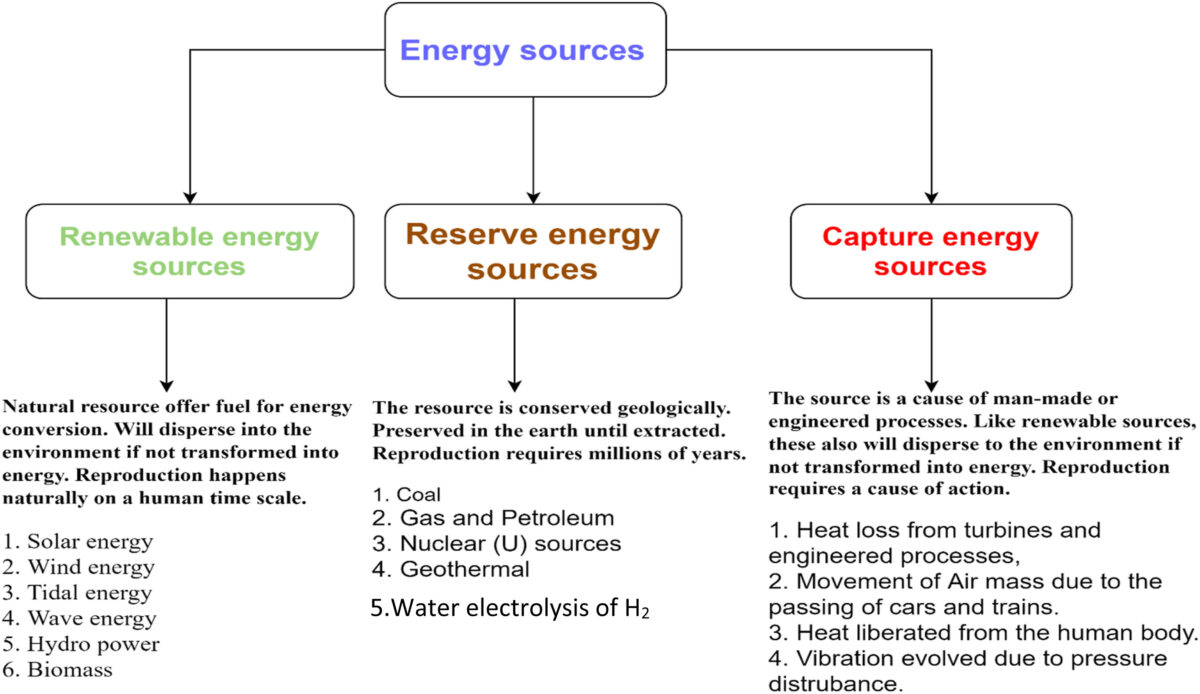Researchers at the Vellore Institute of Technology in India have proposed a new classification of energy sources that is intended to go beyond the usual dichotomy between renewable and non-renewable, or conventional, sources.
“The drawback of conventional taxonomies is that they fail to adopt and define emerging technologies, which is solved by this new classification,” the research's lead author, Ramkumar Alajingi, told pv magazine. “What we call renewables are sources whose origin is Earth/gravitational force. Whilst for bioheat, for example, the origin is ourselves. Our classification of energy sources allows proper knowledge of each energy source's behavior.”
In the study “Novel classification of energy sources, with implications for carbon emissions,” published in Energy Strategy Reviews, Alajingi and his colleagues described the proposed classification as a 3-tier taxonomy based on each source's characteristics with respect to the environment.
“Selecting low carbon emissions as criteria for promotion will effectively counter the hidden strategies of individual nation/organization energy policies for self-economic growth,” they specified, claiming that current taxonomies are subjective and rely on personal definitions attributed to each source.
The proposed new classification includes three categories: Renewable energy sources, which comprise solar, wind, hydropower, and biomass, as well as wave and tidal energy; Reserve energies, including coal, gas, petroleum, nuclear, geothermal, and hydrogen produced via electrolysis; and Capture energy sources, which embrace heat losses from turbines and engineering processes, movement of air mass due to the passage of cars and trains, heat liberated from the human body, and vibration evolved due to pressure disturbance.
“Never categorized energy sources are added to the newly coined term capture energy sources,” the researchers explained, referring to the third category, noting that the old classification uses the non-renewable term for mostly brown energy such as coal, gas, and petroleum. “All man-made actions as primary causes to produce energy are grouped in this classification. The energy is in any form as heat, light, pressure and friction, etc. but unlike traditional methods, the harvesting of these sources requires modern techniques.”
This category is then divided into discharged energy sources and evolved energy sources. The latter includes all energy coming from man-made or engineered actions and the former comprises all energy forms discharged from a process as a waste or by-product.
Referring to the first of the three main categories, the Indian group said that these sources generate low carbon emissions, are location-dependent, and are proven cost-effective energy conversion solutions. “These sources never deplete from the earth,” they stressed. “It must be noted that solar, wind, tidal, and wave energies have the nature of immediate dispersion into the atmosphere if not captured.”
As for the second category, which includes conventional sources, the team said it also includes geothermal and water electrolysis of hydrogen, as these sources are based on the source reserve nature in the environment and avoids the space for conflicts.
“It is insisted that the nature of availability and present usage are vital parameters in assuring the reliability of sources for uninterrupted supply,” the academics concluded. “The terms replenish energy, reserve energy, and capture energy sources replaced the conventional 2-tier renewable and non-renewable energy sources classification.”
This content is protected by copyright and may not be reused. If you want to cooperate with us and would like to reuse some of our content, please contact: editors@pv-magazine.com.




1 comment
By submitting this form you agree to pv magazine using your data for the purposes of publishing your comment.
Your personal data will only be disclosed or otherwise transmitted to third parties for the purposes of spam filtering or if this is necessary for technical maintenance of the website. Any other transfer to third parties will not take place unless this is justified on the basis of applicable data protection regulations or if pv magazine is legally obliged to do so.
You may revoke this consent at any time with effect for the future, in which case your personal data will be deleted immediately. Otherwise, your data will be deleted if pv magazine has processed your request or the purpose of data storage is fulfilled.
Further information on data privacy can be found in our Data Protection Policy.